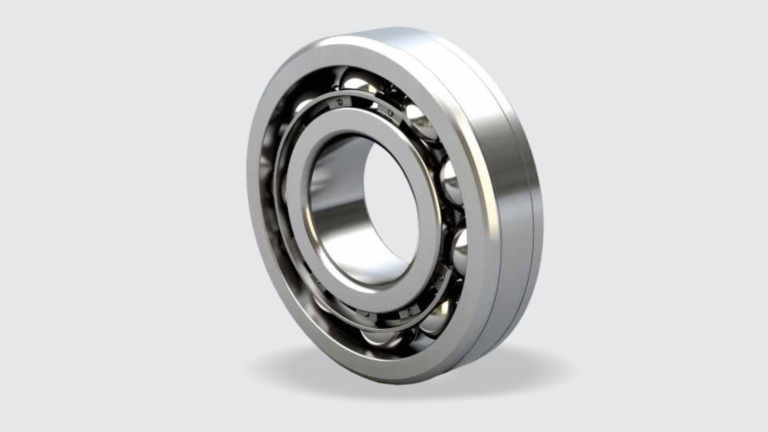Delving into the heart of industrial motion, the article unravels key insights that define the present while offering a visionary glimpse into the industry’s future.
Rapid Growth for Bearings.
It is anticipated that global bearing demand will increase by approximately 5% per annum over the next five years. Current events that continue to cause disruption and introduce elements of uncertainty include the Russia-Ukraine war, raw material shortages, inflation, and the prevailing macro economic policies. Nevertheless, a rise in consumer expenditure is contributing to favourable expansion in the worldwide economy. The trend is upward for foreign investment inhighly concentrated manufacturing sectors, such as Asia-Pacific. Also, expanding environmental concerns and a demand for products that are more ecological and carbonneutral are propelling the development and advancement of new bearing technologies. Bearing demand is significantly influenced by large manufacturing industries. Automotive, aerospace, industrial, and machinery sectors, in addition to engines and other power transmission mechanisms, are among the many industries in which these are utilised. Recurrent trends manifest in each of the sedistinct markets. In anticipation of surging demand, most original equipment manufacturers uphold safety stock. Manufacturers will reduce on-hand materials and del imit inventory during economic downturns, such as the one that occurred during the Covid-19 pandemic. Manufacturers will escalate production levels and stimulate demand for bearings when there is a resurgence in demand and a need to replenish inventories. Automobiles and motors are anticipated to account for well over one-third of new product demand over the next five years, propelling substantial growth in global bearing sales.
Regional Demand and Supply.
The Asia Pacific region is projected to witness the highest growth rate over the next five years, with India and China assuming leading roles. A focus on exports and competitive pricing makes the Asia-Pacific nations ideal for growth. Large multinational bearing companies exercise significant control over the global marketplace. The manufacturing facilities of most key bearing manufacturers are strategically located in nations with substantial domestic markets. Presently, China has emerged as a focal point for nearly every major bearing producer, owing to its status as one of the largest domestic markets. Also, India will always be a growth driver in the region.
The countries with the most sophisticated bearing manufacturing sectors are Germany, Japan, the United States, and Sweden. A few of the world’s leading bearing manufacturers are in these nations. These major developed markets are served by firms that specialise in bearings that are extremely technical and valuable. Despite having robust domestic producers of bearing goods, these nations depend on imports from countries with reduced production costs to satisfy the fundamental demands of their domestic markets.
The Largest Manufacturers
Of Bearings Market Worldwide.

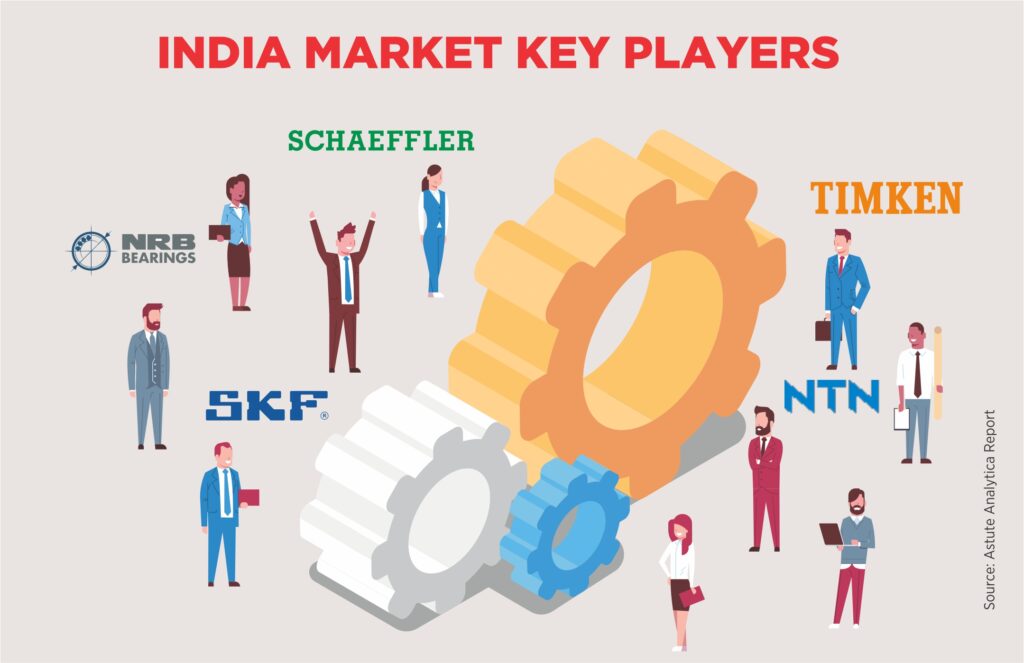
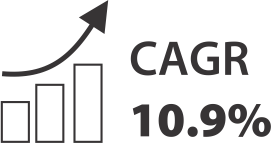
REGIONAL DEMAND AND SUPPLY
As per Astute Analytica report the automotive sector accounted for over 45% of the market in 2021, primarily due to the expansion of the automotive indus try and the growing demand for various types of bearings within that industry. Due to the increasing use of machinery in India’s agricultural sector, the agriculture industry experiences the most rapid development rate of approximately 12.9% over the forecast period among industrial sectors. The segment comprising machine tools held the greatest market share, approximately 28%, due to the increasing demand for these products in the aerospace industry and the widespread adoption of precision bearings.
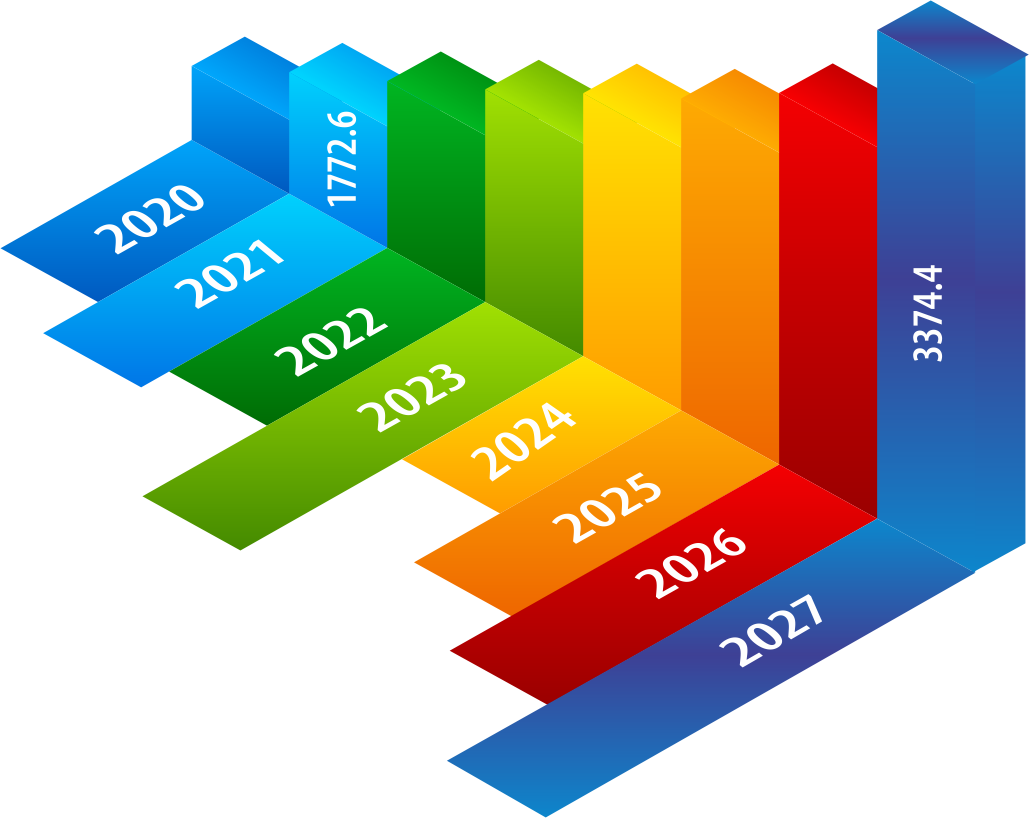
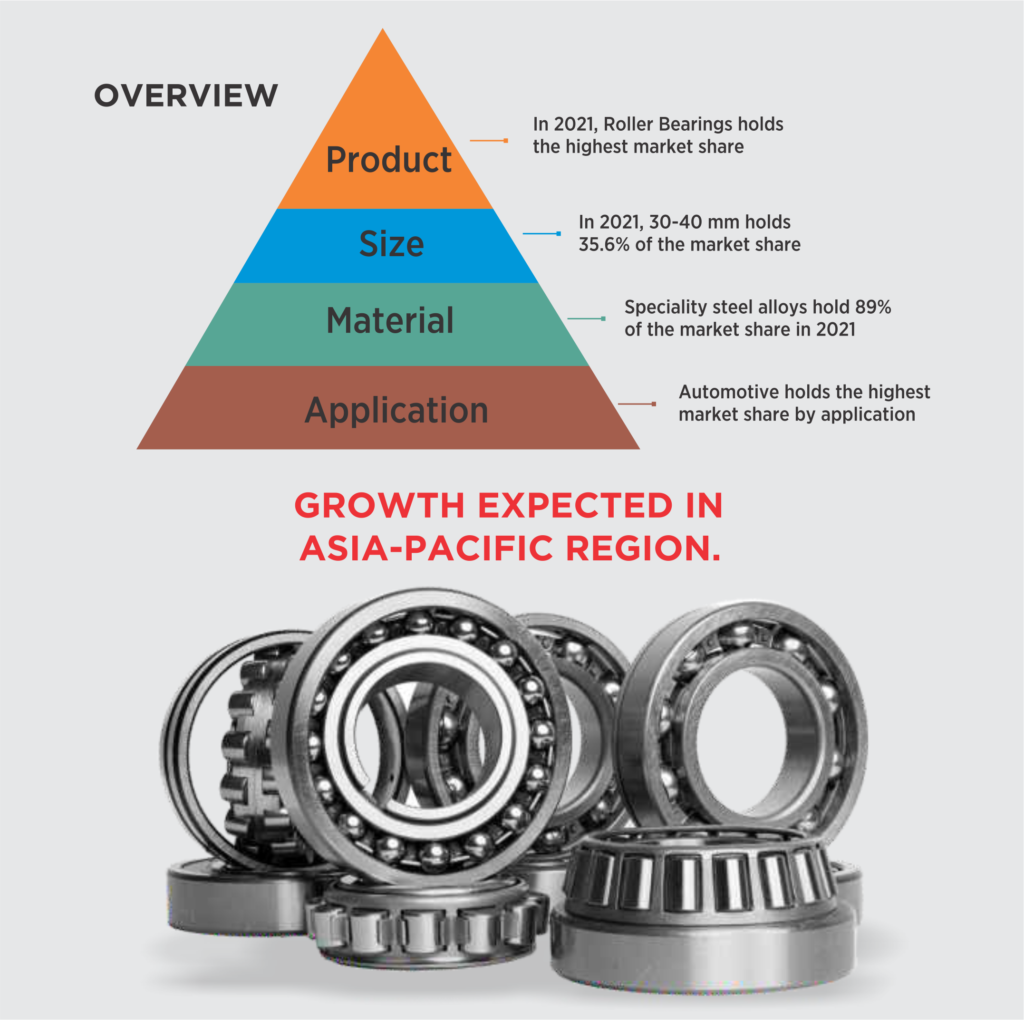
According to a market research study published by Contrive Datum Insights, during the period of the forecast (2023–2030), the Asia-Pacific market for ball bearings is expected to grow the most. The Global Ball Bearing Market Size was valued At USD 21.57 Billion In 2022. It Is projected to reach USD 32.6 Billion By 2030, growing with A CAGR of 4.5% during the forecast period.
In the near future, this market is anticipated to expand due to the rising demand for ball bearings in numerous industries, including machine tools, automobiles, and the emerging advanced medical sectors. Increasing numbers of applications require extremely precision bearings; thus, the market is expanding. Self-aligned bearings, among others, are gaining popularity in an expanding array of end-user markets due to their resistance to severe environmental conditions.
Competitive Landscape.
Key players operating in the India bearings market include SKF, Schaeffler India Limited, Timken India Ltd., The Bearings Co. Ltd, NRB Bearings Limited, National Engineering Industries Ltd (NEI), Menon Bearings Ltd, ISB Industries Private Limited, JTEKT India Limited, NTN Corporation, and Other Major Players.
Major 5 players in the market hold about 70% of the market share. These companies are engaged in strategic initiatives, such as partnerships, mergers & acquisitions, and product launches, among others. For instance, in November 2021, SKF extended the product life as well as performance of its mounted tapered roller bearing by adding a superior seal to it. With this, the company created a new product which can survive contaminated environment for over 600 hours, i.e., 10 times more than any of its competitors’ product
Government Initiatives.
The Indian government has implemented regulations and policies that promote the production of safe goods. Three government institutions, including the Bureau of Indian Standards, the Ministry of Heavy Industries & Public Enterprises, and the Ministry of Labour & Employment, support the regulatory framework in the country. Additionally, India has implemented favourable policies, including but not limited to the National Policy on Safety, Health & Environment at Workplace 2009 and the National Capital Goods Policy 2016. These institutions and policies aid in establishing compliance and standards for health, safety, and the environment. In addition, these initiatives contribute to the enhancement of domestic production, the facilitation of exports, the enforcement of ISO standards for machinery and equipment, the advancement of technology, the reduction of substandard imports via standardisation, and the development of skills. All these elements lend support to the manufacturing sector, thereby stimulating market expansion.
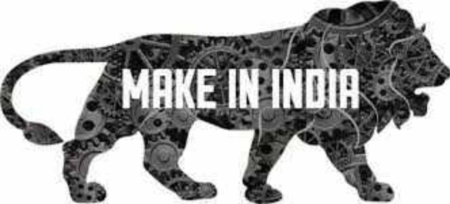
‘Make in India’ and infrastructure development initiatives undertaken by the Indian government have the potential to generate favourable outcomes for the bearing industry. The expansion of the manufacturing sector will also be impacted by policies concerning investment and ease of doing business. The government’s regulatory framework and supporter policies help to facilitate the procurement of safe products. The nation’s regulatory framework is supported by various governmental entities, including but not limited to the Bureau of Indian Standards, the Ministry of Heavy Industries & Public Enterprises, and the Ministry of Labour & Employment. Furthermore, two supplementary policies are the National Capital Goods Policy 2016 and the National Policy on Safety, Health, and Environment in the Workplace (2009). These policies and institutions encourage adherence to s tandards and compliance with environmental, health, and safety concerns. Moreover, by embracing ISO, they advance domestic production, facilitate the development of skills, mandate the standardisation of machinery and equipment, and encourage exports. They also contribute to technological advancement and the reduction of substandard imports via standardisation. The manufacturing industry is bolstered by each of these elements, which in turn stimulates market expansion.
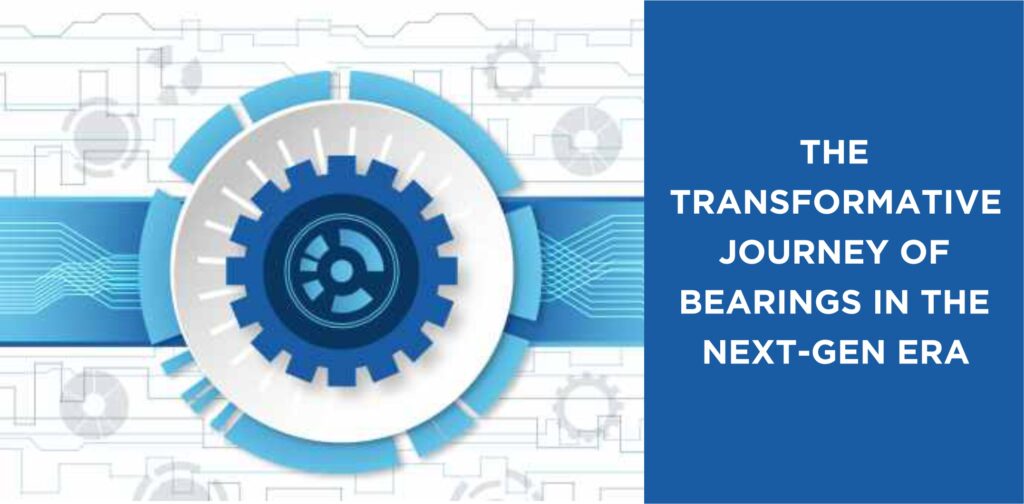
The bearing industry is undergoing a significant paradigm shift, which signifies the advent of the digital age in a time when accuracy and precision are of the utmost importance. This change represents a paradigm transformation in the design, manufacturing, monitoring, and integration of bearings into complex systems, surpassing the simple evolution of components.
Let’s examine the digital revolution’s most significant aspects as they pertain to the bearing industry, as well as its far-reaching consequences.
The Rise of Digital Design.
The digital era has redefined precision in the bearing industry. Advanced modelling, simulation, and digital twin technologies have become instrumental in designing bearings with unparalleled accuracy. From intricate geometries to customised specifications, digital tools empower engineers to push the boundaries of what is achievable, setting new standards for precision and performance.
An Era of Smart Bearings.
Prominent advancements in technology include smart bearings, which are outfitted with sensors and Internet of Things (IoT) functionalities. In addition to controlling their own operations, the seintelligent components also provide real-time in formation regarding the surroundings in which they function. It enables optimal operational efficiency, reduced downtime, and a prolonged lifespan of critical machinery through the implementation of predictive maintenance strategies.
Data-Driven Insights.
In the digital era of bearings, data has become the new lubricant. Advanced analytics systems can extract useful insights by sifting through the enormous datasets that bearings in use produce. These analytics not only optimise the performance that is now being achieved, but they also pave the path for ongoing progress and innovation. They include everything from load capacities to wear patterns.
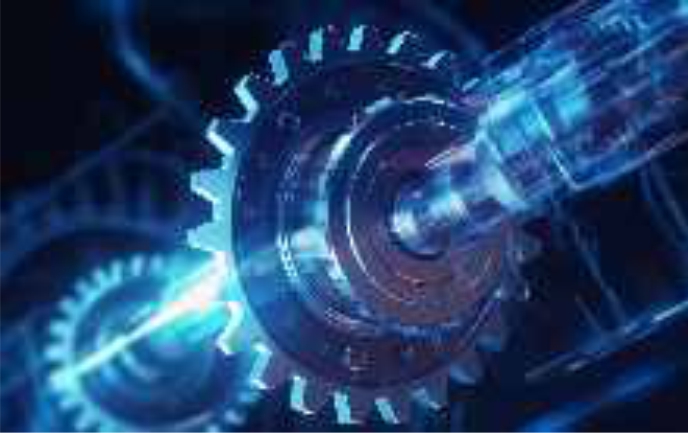
Enhanced Sustainability and Efficiency.
Performance and sustainability are both paramount concerns in the digital age. By optimising energy usage and reducing environmental repercussions, digital technologies facilitate the creation of environmentally sustainable solutions. The alignment of the digital era with worldwide endeavours to achieve sustainability is evident in its intelligent systems that reduce waste and energy consumption.
It’s clear that digital technology integration is a major shift in the bearing sector. This move unlocks tremendous efficiency, precision, and sustainability. The bearing industry, historically known for its mechanical expertise, is now boldly navigating into a future where digital and mechanical coexist, bringing us exceptional innovation and performance.





